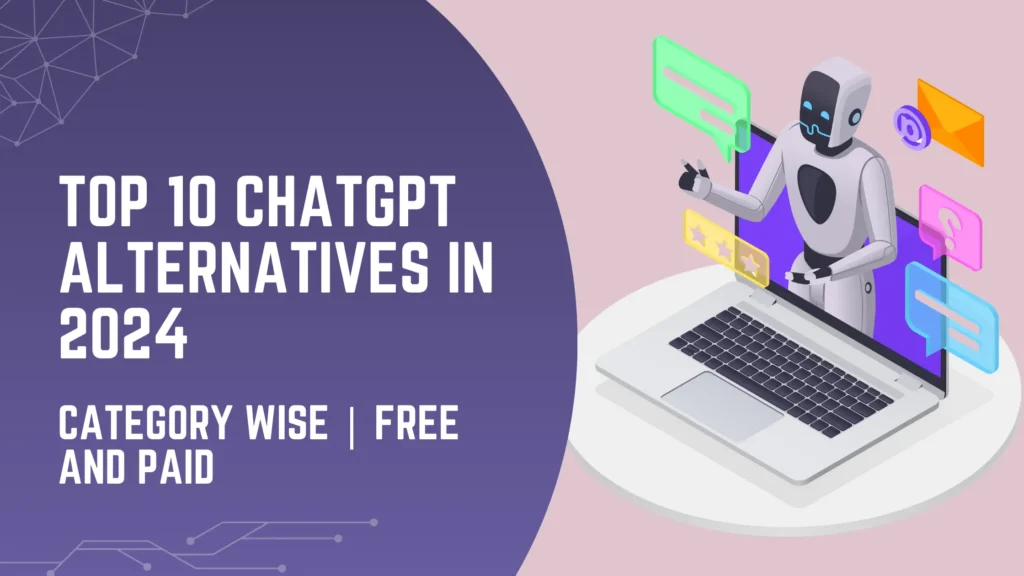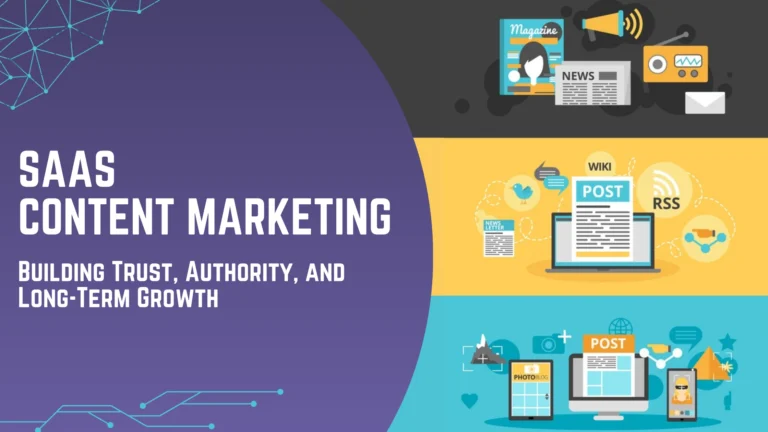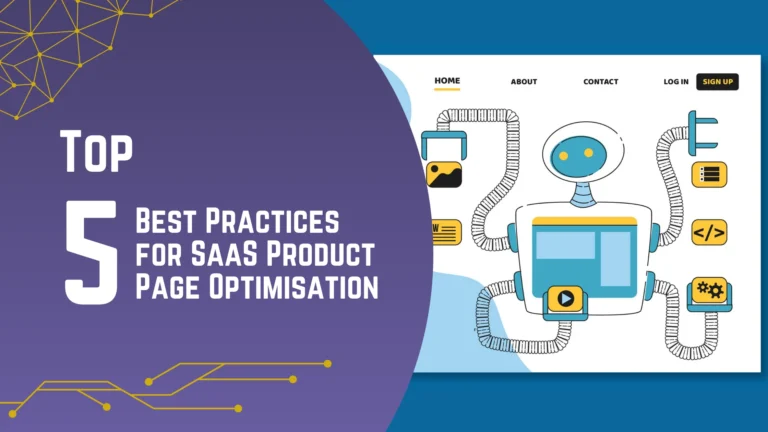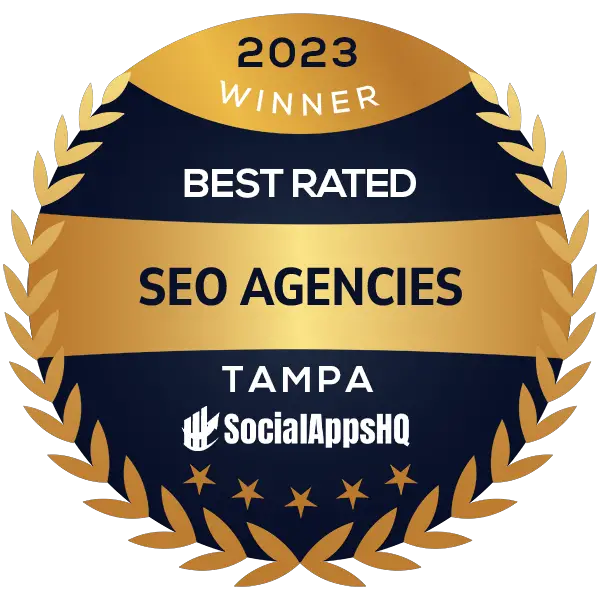The world of AI is revolutionizing how we work. Generative AI tools like ChatGPT are pushing boundaries in creative writing, code generation, and even visual content creation. From crafting compelling stories to writing lines of code, ChatGPT’s capabilities are impressive. But what if you need to go beyond generic content creation and need to achieve something which requires a more personlaised and niche based approach(according to your role of work). Then you would need a ChatGPT Alternative.
ChatGPT might be a jack-of-all-trades, but for specialized tasks, a master is needed. Whether you’re aiming to write SEO-optimized blog posts, translate languages with precision, or generate stunning visuals, a more focused AI tool might be the answer.
The good news? There’s an AI tool out there for every creative itch! This blog dives into the best 2025 alternatives to ChatGPT, each designed to excel in a specific area. We’ll explore a range of AI tools with unique functionalities, helping you find the perfect partner to tackle your specific creative needs.
10 Best ChatGPT Alternatives in 2025
Multimodal AI
1. Gemini(Formerly Google Bard)

Source: Google Gemini
Google unveiled Gemini, an AI model that was renamed from Bard in February 2024. This is Google’s strongest LLM. In contrast to models like ChatGPT, which are intended to support a wide range of conversational skills, Gemini is specifically developed to increase productivity.
In several tests, Gemini performs far better than GPT 3.5, which is basically the free version of ChatGPT. For example, in the MMLU (Massive Multitask Language Understanding) test, Gemini scored 79.13% compared to GPT-3.5’s 70%.
Not only this, but Gemini is also a desirable substitute. Gemini seamlessly interacts with Google Workspace features, which are commonly used by both small business owners and members of the Google Mob. These tools include Docs, Sheets, and Slides.
This implies that we can use Gemini’s AI powers to assist with data analysis, document drafting, presentation creation, and other tasks.There’s no need to transfer content between apps.
Pros:
- Enhanced multimodal functionality (insert various files and images).
- Seamless Google service integration (Sheets, Docs, you name it).
- Large model size makes it ideal for tackling complicated problems.
Cons:
- GPT-4 is currently more effective than Google’s Gemini.
- Transparency issues with the source data.
- Possible premium price for enhanced features.
Cost:
- Gemini Advanced or Freemium $19.99 a month.
- Gemini Business (Add-on for Google Workspace) $20 a month.
2. Microsoft Copilot

Source: Microsoft Copilot
Microsoft Copilot serves as a commendable substitute for ChatGPT. To put it briefly, it uses the GPT-4 architecture and provides free access with a daily prompt restriction (warning!).
Because of this capability, it’s a great resource for problem-solving activities similar to those for which you would normally utilize ChatGPT, producing results that are quite similar to what you would expect from ChatGPT.
To increase productivity, Microsoft 365 has also integrated it by utilizing commonplace programmes like Word, Excel, and Outlook to assist with
- data analysis,
- meeting scheduling,
- and document creation.
It gives you advice and helps you right within the programmes you regularly use.
Pros:
- It saves you time across products because it’s integrated into Microsoft 365 apps.
- Excellent for research because it offers references and is directly related to Bing.
- Operates a free version on the potent GPT-4 architecture.
Cons:
- It can occasionally be challenging to install on your Microsoft Hub.
- Exclusively accessible through the Bing app or after registering for Microsoft Edge.
- Occasionally very slow.
Cost:
- Copilot Pro ($20) or free.
3. OpenAI Playground

Source: OpenAI Playground
The website OpenAI Playground makes it simple to test and play with OpenAI’s most recent AI models, such as GPT-3.5 and GPT-4. It’s comparable to ChatGPT, but with additional customisation options—you can compare various models and adjust parameters.
So, OpenAI Playground makes it simple to compare how GPT-3.5 and GPT-4 react to a prompt. It uses the same models as ChatGPT, but it’s still a wonderful tool for experimenting with generative AI. The interface and degree of testing control are the primary differences.
Overall, OpenAI Playground and ChatGPT are very similar; however, developers that require more precise control to test OpenAI’s technology are the primary target audience for the Playground.
Pros:
- A sandbox setting is excellent for experimentation.
- Extremely adjustable, with the ability to change factors like duration and randomness.
- The “View code” option makes it simple to duplicate the prompt’s parameters.
Cons:
- There isn’t a free option that can be used continuously.
- A little more complicated than ChatGPT.
- To fully utilize the programme, some coding experience is required.
Cost:
- You have five free credits to use before you have to upgrade.
- To get Playground tickets for Premium, you must pay. The prompt prices are $0.03/1k tokens for GPT-4 (8K) and $0.06/1k tokens for GPT-4 (32K) contexts.
Writing
4. Writesonic

Source: Writesonic
Writesonic is an AI writing tool designed specifically for business and marketing content. With its capabilities and templates, you can quickly write a variety of content, including emails, articles, descriptions of products, and ad copy.
Although it can’t solve complicated problems as quickly as ChatGPT, it works well for quickly producing a variety of written content.
The catch is that your monthly word count is restricted by the various price tiers. Therefore, if you create a lot of material, you need to monitor how many words you are using.
Pros:
- It saves your brand information so you don’t have to keep asking for it.
- Writing templates are available.
- Excellent for long-form, high-quality content (1,500 words or more).
Cons:
- The amount of words Writesonic will produce for you each month will determine your price plan.
- They have about a hundred article templates, however you may not discover any that work for your situation.
- It is still authored by AI and won’t pass every plagiarism check.
Cost:
- No cost, $13 Individual, $500 Group.
5. ContentShake AI

Source: Contentshake AI
With its impressive user-friendliness and rapid content generation, ContentShake AI is a useful tool for anyone in need of quick, high-quality material. One notable aspect is the competition analysis, which offers insightful information about the headlines, graphics, and introductions of competitors.
Still, it’s not flawless. It can be a little annoying since there is little content management customisation and no connection with well-known programmes like Grammarly. Even if there are a few places that may use some improvement, but in all, it’s a good option if you require a fast draft based on keyword research.
Pros:
- Interface that is easy to use.
- Research data and recommendations for Semrush keywords.
- Prompt reaction times.
- Feature of competitor analysis.
Cons:
- Absence of a domain exclusion option in competitor analysis.
- Absence of interaction with Grammarly-like tools.
- Not being able to adjust the original prompt.
Cost:
- Unlimited articles and 25 fresh content ideas each week are available for $60/month.
Coding
6. GitHub Copilot

Source: GitHub Copilot
GitHub Copilot is an AI-powered automatic code completion tool that helps developers write code. It was created by GitHub and OpenAI.
The concept is that Copilot would make contextual code suggestions to you while you code, taking into account variables, comments, and your general code structure. By taking care of repetitive coding processes, it seeks to eliminate defects and save developers time.
Constructed on OpenAI’s robust GPT-4 language model, Copilot demonstrates remarkable understanding of code structure and trends in numerous programming languages. After just a few lines, it can recommend completions for entire functions or classes.
Naturally, it’s not ideal because it’s AI-generated; sometimes, it suggests bits that are too long or out of date.
Pros:
- It speaks several languages.
- An excellent resource for novice programmers.
- lessens the quantity of code mistakes you make.
Cons:
- Coders run the risk of becoming overly dependent on it and failing to produce original code bases.
- It can sometimes give you the incorrect code when hallucinating.
- Sharing your code raises privacy and data problems.
Cost:
- Pro version is 10$ a month.
Large Language Model(LLM)
6. Claude AI

Source: Claude AI
Anthropic AI created Claude, an AI chatbot that also serves as the moniker for the Large Language Models (LLMs) that power it. Trained to engage in genuine text-based conversations, Claude performs exceptionally well in a variety of activities, including decision-making, editing, summarizing, and Q&A.
We’ve discovered that it excels in both originality and the tone of voice it uses when creating content—which is strikingly comparable to a human’s.
At the moment, Anthropic has three models available: Claude 3 Haiku, Claude 3 Sonnet, and Claude 3 Opus. Every iteration advances the capabilities of the previous one, getting ever-closer to comprehension at the human level.
Claude can have a maximum token length of 200,000 tokens, which is roughly equal to 150,000 words. You could potentially paste in an entire book and prompt to your heart’s desire because the average book is roughly 75,000 words long.
But it’s not just books; you can also analyze and work on lengthy code snippets, documents, and other materials.
Pros:
- Excellent in creating text that appears to have been written by a person. Seems to have surpassed ChatGPT in a number of benchmarks.
- large context length (excellent for retaining lengthy conversations).
Cons:
- The ChatGPT alternative free edition quickly runs out of the number of discussions (chats) you can open.
- Is occasionally not as adept at handling issues as ChatGPT.
- Not as effective for data processing as ChatGPT.
Cost:
- It is free and paid.
- Pro Version is $20 a month.
7. AnonChatGPT

Source: AnonChatGPT
AnonChatGPT is an anonymous AI chatbot that doesn’t require any registration or personal data to start a conversation.The chatbot is a little slower than the other models because it is driven by OpenAI’s GPT-3, but if you’re searching for a safe substitute, this model might be right for you.
AnonChatGPT stands out for its emphasis on security for users. The service doesn’t record, save, or distribute chats. Additionally, users can have anonymous online chats with other users.
The objective is to establish a transparent platform for AI dialogues without obtaining personal information.
Pros:
- No need to divulge personal information.
- Not very bad for code that is nameless.
- Ads or card payment procedures are not required.
Cons:
- Word limit and hidden character.
- It makes use of GPT 3, which is much weaker than GPT 4..
- It isn’t multifaceted.
Cost:
- Free.
AI Search Engine
9. Perplexity.ai

Source: Perplexity.ai
Perplexity was created as a search and answer engine that uses artificial intelligence (AI) to deliver trustworthy answers to user inquiries. It makes use of the processing of natural language to comprehend inquiries made in conversational language.
After that, it conducts online searches and consults its own knowledge store to deliver conversational responses that are usually extremely accurate.
Pros:
- Precise and thorough search results in contrast to standard search engines like Google.
- A list of every source will be displayed to you.
- Has an app and is free to use.
Cons:
- It is still capable of hallucinations as a predictive search model.
- Not very good at creating content or addressing problems
- Not multimodal like ChatGPT, Gemini, and Copilot.
Cost:
- Pro Version: $200 annually or $20 each month
Conversational ChatBot
10. Grok

Source: Grok AI
Elon Musk’s Grok AI, a chatbot powered by xAI that was once known as “TruthGPT,” is becoming more and more popular because of its innovative approach to the traditional LLM. Elon Musk intended Grok to be a humorous, occasionally rebellious way for consumers to engage with the model, challenging what he called “woke” culture.
Grok’s dependability is at best doubtful. Given that Grok’s training data originates from X (formerly known as Twitter), which contains tweets and thread data that hasn’t been independently checked for accuracy.
Grok’s main advantage is its ability to access the most recent data from X, which makes it a very helpful chatbot for answering questions regarding current affairs. It’s presently undergoing beta testing for users of the premium version of X.
Pros:
- It has a distinct personality since it is both rebellious and sarcastic.
- Access to data in real time from X (previously Twitter).
- strong capacity to write creatively.
Cons:
- It takes an X Premium subscription to access Grok.
- Its training data may not be entirely factually correct because it was trained on data from X.
- Possibilities of being offensive.
Cost:
- The premium version is 16$ a month.
Capabilities and Shortfalls of ChatGPT
Capabilities
1. Simulating and Generating Human-like Conversations
One of ChatGPT’s main functions is to facilitate a highly human-like discussion depending on the questions and prompts the user offers. The quality and intelligence of the questions submitted through a prompt improves the response.
ChatGPT bears a lot of similarities to virtual assistants like Google, Siri, and Alexa. It is capable of producing dialogues that resemble those of humans since it is based on sophisticated Reinforcement and Supervised learning using large language models.
It is driven by the capacity to comprehend the context and uphold the conversation’s continuity and flow. Because of its ability to retain past interactions, it is perfect for conversational studies and interactive chatbot applications.
2. Based on the Language Fluency and Advanced GPT Models
The autoregressive language and linguistic prediction model GPT-3 is developed by OpenAI. Non-sparse language model, regarded to be one of the most important AI tools ever produced. It can produce logical and fluid answers to the user’s questions since it has been educated on vast volumes of text data.
ChatGPT’s exceptional adaptability is one of its many features. It is an excellent choice for multilingual applications due to its ability to understand and produce texts that are human-like in a variety of languages.
3. Flexibility and Wide Range of Uses
The versatility and applicability of ChatGPT to many use scenarios is another of its main features. It can be used for a variety of tasks, including
- summarization of texts,
- language generation,
- query-solution duties,
- processing natural languages,
- music composition,
- essay and story writing,
- research work,
- and language translation.
It is an extremely interesting tool because it can even carry out coding and programming jobs.
4. Allows for Plug-in Integration for Extensions
ChatGPT’s compatibility with multiple different platforms is an extra benefit. It can be combined with chatbots and added to any third-party services or applications. Plug-ins enable users to expand the features and functionalities of ChatGPT.
5. Adaptable to Minor Adjustments
This is one more noteworthy benefit of ChatGPT. It has the ability to adjust particular datasets so that the replies it offers can be tailored to tasks and requirements unique to a given domain.
Even though it is now built on a massive language model, active training with reinforced learning and supervised instruction can still make it better. It is continuously being updated and enhanced by Open AI, its parent company.
Shortfalls
Let’s also explore ChatGPT’s shortcomings and the issues that prevent it from reaching its full potential.
1. Inconsistencies and Ambiguities
A significant drawback of ChatGPT is its inclination to generate erroneous or unintelligible text while simultaneously producing believable and captivating answers. Language models generally have this problem, and ChatGPT is not free from this flaw.
Because ChatGPT generates responses depending on the data it is trained on, it may unintentionally repeat the data input it is trained on, which could lead to biases, disinformation, and mistakes.
2. Restricted Understanding
Because ChatGPT was trained with datasets aggregated only through 2021, its weak understanding of recent events is by far its greatest drawback. Since it is only reliant on the knowledge it is trained on, which can sometimes not be current and thorough, it lacks real-world expertise and the most recent information.
It is unable to provide information about current events and some domain-specific expertise since it does not have access to the most recent information.
3. Concerns and Important Ethical Issues
The main drawback and difficulty with ChatGPT is that it is closely examined. There are certain educational institutions that have banned its use. The issue of copyright violations raises serious issues.
It has also come under fire for replacing human-centered activities that are inherently labor-intensive, such customer service, therapy counseling, etc. It is really concerning because ChatGPT outcomes are derived from human-generated text.
4. Restricted Originality and Insufficient Emotional Intelligence
Like any other AI powered tool, ChatGPT is an impersonal and emotionally insensitive instrument. The emotion conveyed in the voice of the user’s contribution will be missed.
In the course of an intensely heated conversation, this could have a major effect on the quality of the response. It is also uncreative and unable to generate unique and inventive stuff on its own.
5. Possible Legal Repercussions
The Common Crawl dataset, which includes copyrighted publications from publishing companies as well as individual scholars and authors, was used to create GPT.
Experts predicted that AI-based apps would be useful and employable for cybercrime. As a result, ChatGPT may incur expenditures associated with compliance as well as legal ambiguity.
6. Having Trouble Managing Ambiguity
Because ChatGPT cannot ask for clarifications or more information in the case that a user submits unclear or confusing information, it is unable to handle requests or queries that are unclear. In certain cases, it might guess or give insufficient answers. This replicates the possibility of being exploited maliciously.
Conclusion
Even though ChatGPT is among the most well-known generative AI tools, you must review every résumé when it comes time to onboard an AI helper.
Artificial intelligence is developing quickly, so ChatGPT’s competitors are numerous. Since many of them are designed to carry out more specialized duties, your industry may benefit more from their skills. You’ll have a new indispensable helper once you select the best ChatGPT alternative best fitted to your use case.
Sure, AI assistants might not be able to grab you a coffee run just yet. But the beauty lies elsewhere. Imagine finishing your tasks significantly faster with the help of AI. The time saved translates to more freedom in your day – enough time to grab that cappuccino yourself, or pursue something else you enjoy. Who knew AI could make work not only efficient, but even enjoyable by freeing up your time and reducing stress?
Frequently Asked Questions
What is the query capacity of ChatGPT?
The GPT-4 communication restriction is 40 messages per three hours, effective January 5, 2024.
What are the other AI products from OpenAI?
OpenAI created the text-to-video AI model Sora, which responds to user commands to produce films that are up to one minute in length. OpenAI’s GPTBot is a web crawler that collects information that could be utilized to enhance the business’s next AI models.
What is Google’s version of ChatGPT?
Google redesigned Bard as Gemini in February 2024 to introduce an enhanced AI chatbot.
How much does GPT 4 cost?
GPT-4 can be accessed with a $20 per month ChatGPT Plus subscription.
Which is the best tool for generative AI images?
Artbreeder’s user-friendly interface, wide range of choices, and creative collaboration tools make it an excellent choice for image generation.
Can I use GPT 3 access the internet and give updated information?
ChatGPT may now browse the web to deliver up-to-date information to premium subscribers.
What is the difference between traditional AI and generative AI?
While generative AI enables computers to create entirely new outputs frequently indistinguishable from human-generated material, traditional AI concentrates on analyzing past data and forecasting future numbers.










